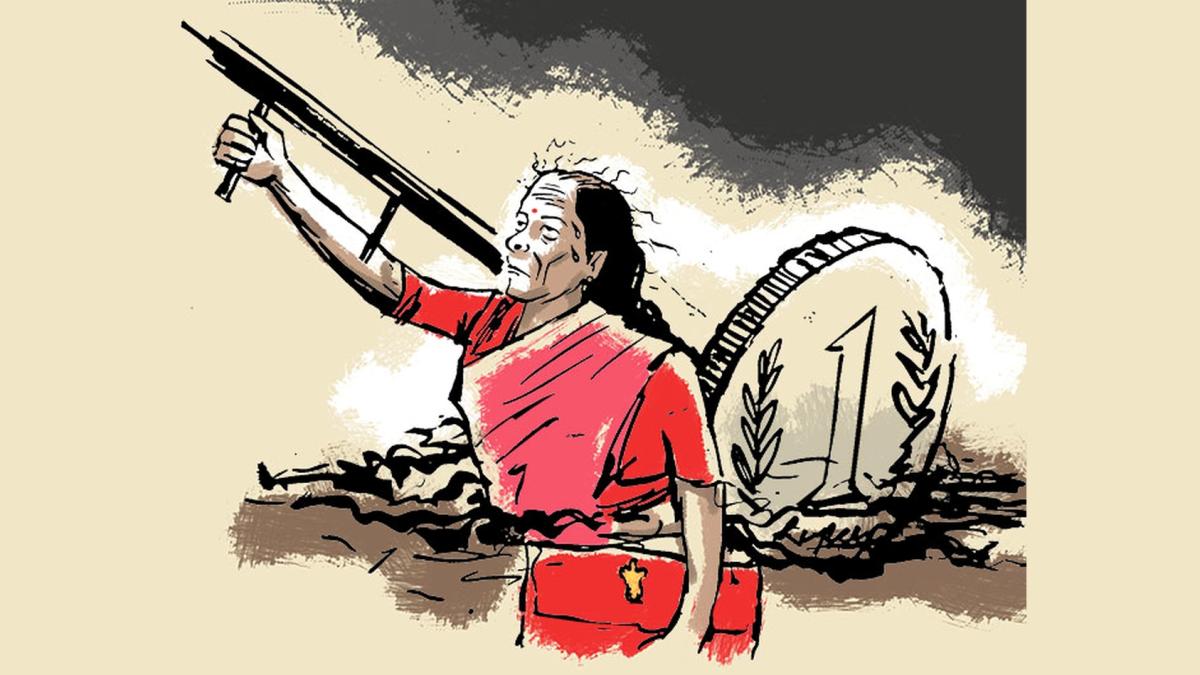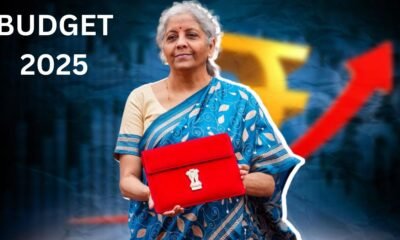Published
9 months agoon

If we were to look at the past seven years, the Indian govt has built itself a strange reputation—not for overspending or reckless fiscal policies, but for consistently underutilizing the funds it allocates.
To put it into perspective, according to Goldman Sachs, the government has been using only about 80% of its total available budget each year, leaving a significant chunk untouched. However, while this gap narrowed somewhat post-pandemic due to increased spending on food subsidies, the larger trend remains troubling—a reluctance (or inability) to put money where it’s needed most.
Less Spending, Slower Growth
If you’re wondering why this matters, let’s put it simply—less spending equals slower economic growth. Public expenditure is a major driver of economic momentum, and when the government doesn’t fully utilize its allocated budget, it dampens investment, weakens infrastructure development, and ultimately stifles overall GDP growth.
And the troubling part, the trend isn’t improving!
According to Goldman Sachs projections the public expenditure will shrink even further, falling to 3.2% of GDP by FY 2025-26. This means that just when India needs a fiscal push to boost its economy, the government is pulling back. Fiscal discipline is great, but not when it acts as a drag on growth.

The $5 Trillion Economy Dream—Will It Stay Just A Dream?
India’s ambition of becoming a $5 trillion economy hinges on one crucial factor—sustainable growth. However, that requires strategic spending, particularly on infrastructure, tax reforms, and welfare programs. The upcoming Union Budget 2025 is expected to play a key role in shaping the economy’s trajectory, but the challenges are real-
To counter these headwinds, capital expenditure (capex) must remain a priority. Productive capex has a higher multiplier effect on economic growth, which means that every rupee spent on infrastructure and development generates greater returns in the long run. But will the government rise to the occasion?
Capex vs. Reality
On paper, India’s gross fixed capital formation (GFCF)—a measure of investment in assets like roads, buildings, and machinery—has been rising. It hit 30.8% of GDP in FY24, surpassing pre-pandemic levels. Sounds promising, right? Not so fast.
Much of this growth has been propped up by government capex and household investments in housing. However, momentum slowed in the first half of FY25, thanks to election-related disruptions. Data shows that –
This is a clear signal of cautious (or delayed) spending. Governments at both the central and state levels have failed to meet their capex targets, which has affected infrastructure projects and broader economic momentum.
The 50-Year Loan Band-Aid—Will It Work?
To address state-level capex shortfalls, the Centre increased its allocation for 50-year interest-free loans to Rs 1.5 trillion in the FY25 budget. While this sounds great, there’s a catch—states have historically struggled to utilize such funds efficiently. For instance, last year, they used only Rs 1.1 trillion out of the Rs 1.3 trillion allocated. So, unless there’s better execution, the additional funds may not translate into real economic gains.
The Private Sector Conundrum. Waiting For A Green Light
While public capex has its struggles, private sector investment isn’t exactly picking up the slack. Businesses are hesitant to pump in money due to various factors, such as – global economic uncertainties, geopolitical risks, oversupply from China, high borrowing costs and weak domestic demand.
A potential interest rate cut and fiscal support from the upcoming Union Budget might help, but unless business sentiment improves, private capex will remain sluggish.
)
FDI and The Rupee
Foreign direct investment (FDI) has been a bright spot—gross FDI inflows hit $48.6 billion in FY25 (YTD), higher than last year’s $42.1 billion. But there’s a flip side—higher profit repatriation by foreign companies has resulted in muted net FDI inflows. Combine that with foreign portfolio investor (FPI) outflows, and you get increased pressure on the rupee’s depreciation.
Given the global uncertainty and India’s slowing domestic growth, fiscal support is more critical than ever. Without it, India risks losing its appeal as an investment destination.
Budget Allocation vs. Actual Spending. A Widening Gap
The Indian government has ramped up capex allocations, from 1.6% of GDP in FY19 to a projected 3.4% in FY25. State capex has also grown to 2.6% of GDP, surpassing pre-pandemic levels. Yet, the question—how much of this is actually getting spent?
A pattern has emerged where funds are allocated but remain underutilized, creating a frustrating gap between policy intentions and on-the-ground execution.
A Glimmer of Hope
Despite the underwhelming public capex story, some positive trends have emerged –
The Last Bit


Singapore Economy On A High. Annual GDP Expands At Fastest Pace Since 2021. Asian Markets Mixed Bag Reaction To Trump’s Reciprocal Tariffs


Global Economic Pulse, UK’s Surprise Growth, US Inflation Jumps While China And Japan Battle It Out—Who’s Leading And Who’s Lagging?


All You Need To Know About The New Income Tax Bill 2025, Debuts With A New Concept Of ‘Tax Year’. A Meaningful Change Or Just A Facelift?


All About The Union Budget 2025-26—Worthy of Claps, Or Is There Something Lurking That We May Have Missed?


Budget 2025. What’s FM’s Game Plan? Boost Growth, Cut Deficit, Or Finally Listen To The Struggling Middle Class?


The Stock Market’s Cracking—And It’s Not Pretty. FIIs Exodus But Analysts Sight Long Term Potential Despite Rs 32,00,000 Core Investor Wealth Gone In 2025. What Is The Bear-ish Deal Here?
